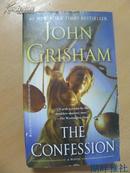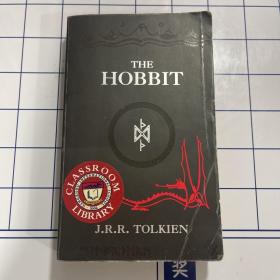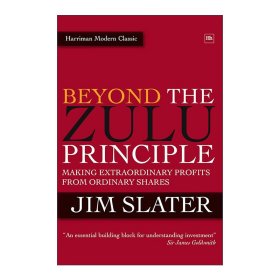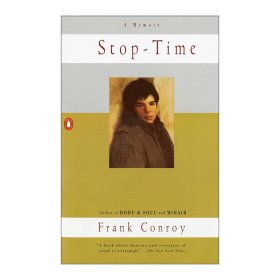
英文原版 The Information: A History, A Theory, A Flood 信息简史 英文版 进口英语原版书籍
书籍内容简介可联系客服查阅,查书找书开票同样可以联系客服
¥ 95 ¥ 95 九五品
库存20件
作者Gleick, James
出版社Vintage
ISBN9781400096237
出版时间2012-03
装帧平装
定价95元
货号YB-1973
上书时间2024-03-11
- 最新上架
商品详情
- 品相描述:九五品
- 商品描述
-
内容摘要
书名:The Information: A History, A Theory, A Flood信息简史 作者:James Gleick詹姆斯·格雷克 出版社名称:Vintage 出版时间:2012 语种:英文 ISBN:9781400096237 商品尺寸:13.1 x 2.7 x 20.2 cm 包装:平装 页数:544 The Information: A History, A Theory, A Flood《信息简史》是美国作家詹姆斯·格雷克编著的一本图书,该书对“信息”的前世今生给出了总体大写意、局部工笔的简明描绘。 这是为信息第1次写历史,是一部媲美《时间简史》和《万物简史》的著作。该书对于任何想了解信息时代是如何发展而来,它又将走向何处的读者,都将是一次极富启示的阅读体验。 ★百万级销量科普畅销书作家詹姆斯·格雷克七年磨一剑 ★带来一段人类与信息遭遇的波澜壮阔的历史 ★告诉我们如何在信息时代的信息爆炸中生存 ★2011年度《纽约时报》畅销书 ★2011年度《出版商周刊》年度图书 ★2012年度英国皇家学会科普图书奖 ★美国笔会爱德华·威尔逊科普文学奖 ★英国笔会赫塞尔-蒂尔特曼奖得主 A New York Times Notable Book A Los Angeles Times and Cleveland Plain Dealer Best Book of the Year From the bestselling author of the acclaimed Chaos and Genius comes a thoughtful and provocative exploration of the big ideas of the modern era: Information, communication, and information theory. Acclaimed science writer James Gleick presents an eye-opening vision of how our relationship to information has transformed the very nature of human consciousness. A fascinating intellectual journey through the history of communication and information, from the language of Africa’s talking drums to the invention of written alphabets; from the electronic transmission of code to the origins of information theory, into the new information age and the current deluge of news, tweets, images, and blogs. Along the way, Gleick profiles key innovators, including Charles Babbage, Ada Lovelace, Samuel Morse, and Claude Shannon, and reveals how our understanding of information is transforming not only how we look at the world, but how we live. 人类与信息遭遇的历史由来已久。詹姆斯·格雷克笔下的这段历史出人意料地从非洲的鼓语讲起。非洲土著部落曾用只有高低两个音的鼓声来传递复杂的讯息,但他们是如何做到的?后续章节进而讲述了这段历史上几个影响深远的关键事件,包括文字的发明、罗伯特考德里的一本英语词典、查尔斯巴贝奇的差分机与爱达拜伦的程序、沙普兄弟的信号塔与摩尔斯电码。 但人类开始自觉地理解和利用信息始于克劳德香农于1948年创立的信息论。香农的信息论不仅大大推动了信息技术的发展,也引发了其他许多学科的信息转向,改变了人们对于诸如麦克斯韦妖、生命的编码、模因、随机性、量子信息论等的理解。部分科学家甚至认为,构成世界的基础不是物质,不是能量,而是信息。正如物理学家约翰惠勒所说,“万物源自比特”。 现如今,信息如洪流般淹没了我们,使我们深陷信息焦虑、信息过载、信息疲劳的困扰。但回顾历史,这并不是件新鲜事,人们也总是能想出应对手段。维基百科、Google便是我们的应对之一。无论对于信息的未来持何态度,有一点是确定无疑的,即我们人类是信息的造物。 作为《混沌》《费曼传》《越来越快》《牛顿传》等畅销书的作者,格雷克不仅在书中细致还原了历史细节,通俗解释了各种理论,还生动刻画了几位不为大众所熟知的人物:可编程计算机先驱、超越时代的查尔斯巴贝奇,第1位程序员、诗人拜伦之女爱达拜伦,计算机科学之父、天妒英才的阿兰图灵,以及全书的主人公、信息论之父克劳德香农。 James Gleick, the author of the best sellers Chaos and Genius, now brings us a work just as astonishing and masterly: a revelatory chronicle and meditation that shows how information has become the modern era’s defining quality—the blood, the fuel, the vital principle of our world. The story of information begins in a time profoundly unlike our own, when every thought and utterance vanishes as soon as it is born. From the invention of scripts and alphabets to the long-misunderstood talking drums of Africa, Gleick tells the story of information technologies that changed the very nature of human consciousness. He provides portraits of the key figures contributing to the inexorable development of our modern understanding of information: Charles Babbage, the idiosyncratic inventor of the first great mechanical computer; Ada Byron, the brilliant and doomed daughter of the poet, who became the first true programmer; pivotal figures like Samuel Morse and Alan Turing; and Claude Shannon, the creator of information theory itself. And then the information age arrives. Citizens of this world become experts willy-nilly: aficionados of bits and bytes. And we sometimes feel we are drowning, swept by a deluge of signs and signals, news and images, blogs and tweets.The Informationis the story of how we got here and where we are heading. 詹姆斯·格雷克 ,生于1954年,本科毕业于哈佛学院,曾长期在《纽约时报》担任记者和编辑,并多年为《时代》周刊撰写技术专栏。1987年,他的作品《混沌:开创新科学》入围了美国国家图书奖和普利策奖的决赛,并成为畅销书,使得“混沌”、“蝴蝶效应”的说法家喻户晓,现已销售超过百万册。其后他又陆续出版了《费曼传:1000年才出一个的科学鬼才》(1992)、《越来越快:飞奔的时代飞奔的一切》(1999)、《牛顿传》(2003)等书,它们相继被翻译成了二十多种语言。 他是较早一批投入互联网创业热潮的人。1993年11月,他与合作者联合推出了Pipeline互联网接入服务,率先提供了用户友好的图形界面。十四个月后,Pipeline以一千万美元股票的价格出售。 James Gleick is our leading chronicler of science and modern technology. His first book, Chaos, a National Book Award finalist, has been translated into twenty-five languages. His best-selling biographies, Genius: The Life and Science of Richard Feynman and Isaac Newton, were short-listed for the Pulitzer Prize. Across the Dark Continent sound the never-silent drums: the base of all the music, the focus of every dance; the talking drums, the wireless of the unmapped jungle. —Irma Wassall (1943) No one spoke simply on the drums. Drummers would not say, “Come back home,” but rather, Make your feet come back the way they went, make your legs come back the way they went, plant your feet and your legs below, in the village which belongs to us. They could not just say “corpse” but would elaborate: “which lies on its back on clods of earth.” Instead of “don’t be afraid,” they would say, “Bring your heart back down out of your mouth, your heart out of your mouth, get it back down from there.” The drums generated fountains of oratory. This seemed inefficient. Was it grandiloquence or bombast? Or something else? For a long time Europeans in sub-Saharan Africa had no idea. In fact they had no idea that the drums conveyed information at all. In their own cultures, in special cases a drum could be an instrument of signaling, along with the bugle and the bell, used to transmit a small set of messages: attack; retreat; come to church. But they could not conceive of talking drums. In 1730 Francis Moore sailed eastward up the Gambia River, finding it navigable for six hundred miles, all the way admiring the beauty of the country and such curious wonders as “oysters that grew upon trees” (mangroves). He was not much of a naturalist. He was reconnoitering as an agent for English slavers in kingdoms inhabited, as he saw it, by different races of people of black or tawny colors, “as Mundingoes, Jolloiffs, Pholeys, Floops, and Portuguese.” When he came upon men and women carrying drums, carved wood as much as a yard long, tapered from top to bottom, he noted that women danced briskly to their music, and sometimes that the drums were “beat on the approach of an enemy,” and finally, “on some very extraordinary occasions,” that the drums summoned help from neighboring towns. But that was all he noticed. A century later, Captain William Allen, on an expedition to the Niger River,(1) made a further discovery, by virtue of paying attention to his Cameroon pilot, whom he called Glasgow. They were in the cabin of the iron paddle ship when, as Allen recalled: Suddenly he became totally abstracted, and remained for a while in the attitude of listening. On being taxed with inattention, he said, “You no hear my son speak?” As we had heard no voice, he was asked how he knew it. He said, “Drum speak me, tell me come up deck.” This seemed to be very singular. 1234567
相关推荐
-

The……英文原版
八五品北京
¥ 100.00
-

The Confession (英文原版)
九品衡水
¥ 18.70
-

英文原版 the trial
八五品大连
¥ 150.00
-

THE VISITORS 英文原版
九品商丘
¥ 31.10
-

【英文原版】The Onyx
八五品天津
¥ 26.00
-

The Hobbit 英文原版
八五品绍兴
¥ 68.00
-

The Reader 英文原版
八五品绍兴
¥ 12.00
-

The Encyclopedia【英文原版】
九品北京
¥ 163.00
-

The Epicurean,英文原版
九五品北京
¥ 396.00
-

The Ghostlights,英文原版
九五品北京
¥ 139.00
— 没有更多了 —












以下为对购买帮助不大的评价